In today’s fast-paced business world, Managed IT Services have become essential for organizations looking to stay ahead of the competition. By outsourcing IT management to experts, businesses can streamline operations, cut costs, and improve security—critical factors for long-term growth and efficiency.
Our Managed IT Services outlines four main areas designed to deliver significant value:
1. Managed IT Services User Support (Per User)
- Unlimited Help Desk: Keeps productivity high by offering constant support, minimizing downtime.
- Cloud Directory: Enhances security with centralized identity management and seamless application access.
- Cybersecurity Awareness Training: Strengthens defenses against breaches through user education.
2. Managed IT Services Device Support (Per Device)
- Endpoint Detection and Response (EDR/XDR): Safeguards devices with real-time threat detection.
- 24/7 Security Operations Center (SOC): Ensures swift threat mitigation.
- Automated Privileged Access Management (PAM): Protects systems by managing user access.
3. Managed IT Services Server Support (Per Server)
- Extended Detection and Response: Protects critical servers from attacks.
- 24/7 SOC Monitoring and Server Patching: Maintain data integrity and performance.
- Managed Backups: Ensure quick data restoration.
4. Managed IT Services Site / Network Support (Per Site)
- Enterprise-Grade Firewall: Guards network perimeters.
- Shared Network Device Management: Ensures reliable and efficient connectivity.
5. Managed IT Services Strategic Executive IT Guidance (Per Executive Team)
- Technology Roadmap Development: Aligns IT strategy with business goals.
- Quarterly IT Performance Reviews: Gain insights and receive actionable recommendations.
- Risk and Compliance Advisory: Review regulatory standards and minimize risk exposure.
- Budget and Resource Planning: Optimize and plan IT investments.
These services work together to create a secure and resilient IT environment that supports business goals, ensuring smooth operations and room for growth.
Understanding Managed IT Services
Managed Service Providers (MSPs) play a crucial role in the IT industry by offering businesses specialized services that ensure efficient and resilient IT environments. MSPs are third-party companies responsible for managing a customer’s IT infrastructure and end-user systems on a proactive basis. By utilizing MSPs, organizations delegate their IT operations to experts, which helps minimize downtime and enhances operational efficiency.
Definition and Role of MSPs in the IT Industry
Here are the core responsibilities of MSPs and how they contribute to businesses:
- Core Responsibilities: MSPs typically handle network management, cybersecurity, data backup, and recovery. This allows businesses to focus on their core functions without the distraction of complex IT issues.
- Proactive Monitoring: Through constant monitoring and management of IT systems, MSPs can detect potential problems before they escalate into significant issues, ensuring uninterrupted business operations.
- Cost Predictability: With fixed monthly charges, businesses benefit from predictable budgeting compared to variable costs associated with maintaining in-house IT staff.
Evolution of IT Management through Outsourcing
Outsourcing IT management has evolved significantly over the years, transforming how businesses handle technology. Initially viewed as a cost-saving measure, outsourcing has become a strategic approach to enhance efficiency and competitiveness.
Here are two key aspects of this evolution:
- Scalability: Businesses can quickly scale their technology needs up or down without investing heavily in new infrastructure or personnel. This flexibility is crucial for growth-oriented companies navigating fluctuating demands.
- Access to Expertise: Outsourcing provides access to a wide range of specialized skills and advanced technologies that may be cost-prohibitive for many organizations to maintain internally.
By understanding the role of MSPs and the evolution of outsourcing in IT management, organizations can leverage these services to create streamlined operations that support their strategic goals.
Key Line Items of Our Managed IT Proposal
In today’s fast-paced business environment, robust IT support is not just an advantage—it’s a necessity. Our Managed IT Proposal is designed to address the critical areas of IT management, ensuring security, efficiency, and scalability. The proposal is structured around four main line items:
1. Managed IT Services User Support (Per User)
- Unlimited Help Desk for the User: Ensuring users have immediate support minimizes downtime and maintains high productivity levels. A reliable help desk allows employees to resolve issues swiftly, keeping operations running smoothly and enhancing overall performance.
- Cloud Identity Provider: Unified identity management across cloud and on-premises platforms, providing seamless, secure access to all organizational resources. This centralized approach enhances security through consistent access controls, improves user experience with single sign-on capabilities, and accelerates employee onboarding and offboarding processes.
- Mobile Device Management (MDM): Enterprise device management system that provides complete control over all mobile devices, ensuring data security through remote monitoring, access management, and device wiping capabilities. This solution safeguards sensitive information on smartphones, tablets, and laptops while streamlining employee transitions and protecting against potential security breaches from lost or compromised devices.
- Single-Sign On (SSO): Streamline user experience across organizational systems by enabling access to multiple applications with one secure authentication. This reduces password fatigue and security risks while strengthening access control through centralized policies. SSO saves time by eliminating repeated logins, cuts IT support costs, simplifies compliance through better monitoring, and boosts productivity with instant resource access.
- Password Manager: Secure storage and management of complex passwords, enhancing security while simplifying user access to various systems.
- Cybersecurity Awareness Training: Educating users on the latest cyber threats helps prevent breaches due to human error. This proactive approach fortifies organizational defenses by fostering a knowledgeable and vigilant workforce.
2. Managed IT Services Device Support (Per Device)
- Endpoint Detection and Response (EDR/XDR): Advanced monitoring detects, contains, and responds to threats in real time. Safeguarding user devices from cyberattacks reduces the risk of costly incidents, ensuring business continuity.
- 24/7 Security Operations Center (SOC): Continuous security monitoring ensures threats are detected and mitigated quickly, providing peace of mind even outside normal business hours. This constant vigilance significantly reduces potential breaches.
- Automated Privileged Access Management (AutoElevate): Controlling elevated access on devices minimizes security risks by ensuring only authorized users can make critical changes. This automated management shields against unauthorized or accidental alterations that could compromise system integrity.
3. Managed IT Services Server Support (Per Server)
- Extended Detection and Response (EDR/XDR): Enhanced threat detection on critical servers protects against malware or ransomware attacks on high-value systems. This service ensures uninterrupted server performance crucial for maintaining operational consistency.
- 24/7 Security Operations Center (SOC): Around-the-clock monitoring provides immediate responses to security threats, safeguarding servers even when internal teams are unavailable. Minimizing data loss or downtime supports seamless business operations.
- Managed Backups for the Server: Regular backups ensure rapid data restoration in case of loss, supporting business continuity by reducing downtime and preserving essential information.
- Server Patching: Timely updates prevent exploitation of vulnerabilities by keeping servers secure and maintaining reliable performance for critical applications.
4. Managed IT Services Site / Network Support (Per Site)
- Enterprise-Grade Firewall to Support the Site: A well-configured firewall protects the network perimeter by blocking unauthorized access. Reducing exposure to cyber threats is essential for safeguarding company data against potential attacks.
- Management of Shared Network Devices (Printers, Routers, Switches, etc.): Centralized management ensures reliable performance and seamless connectivity across the network. This organization reduces disruptions while improving resource efficiency and team productivity.
5. Managed IT Services Strategic Executive IT Guidance (Per Executive Team)
- Technology Roadmap Development: Ensures your IT strategy aligns with business objectives, helping you scale efficiently and stay competitive as new opportunities arise.
- Quarterly IT Performance Reviews: Delivers clear insights into your IT environment’s health, offering targeted recommendations to enhance security, productivity, and system performance.
- Risk and Compliance Advisory: Keeps your business aligned with regulatory standards, reducing the risk of fines and protecting your reputation by proactively managing compliance.
- Budget and Resource Planning: Helps you optimize IT investments with strategic budgeting, ensuring resources are allocated to support growth while controlling costs.
Each service within our proposal contributes significantly to creating a secure, efficient, and resilient IT environment aligned with business priorities. By protecting critical assets and minimizing downtime, these solutions empower your organization to focus on growth while leveraging technology as a strategic enabler for future success.
Managed IT Services User Support (Per User)
Effective user support is fundamental to maintaining productivity and ensuring seamless operations across your organization. Our managed IT services provide comprehensive user-level support through several key offerings:
1. 24/7 Help Desk Support
Our dedicated help desk provides round-the-clock assistance for all user-related IT issues. Whether it’s software troubleshooting, access problems, or general technical guidance, our experienced team ensures minimal downtime and quick resolution of user concerns.
2. Security Awareness Training
Regular security training sessions keep your users informed about the latest cybersecurity threats and best practices. This proactive approach reduces the risk of security incidents caused by human error and strengthens your organization’s overall security posture.
3. User Access Management
Streamlined management of user accounts, permissions, and authentication ensures that employees have appropriate access to necessary resources while maintaining security. This includes automated onboarding/offboarding processes and regular access reviews.
4. Personalized IT Consultation
Our IT specialists provide tailored guidance to users based on their specific roles and needs, helping them optimize their use of technology tools and improve their productivity through better understanding of available resources. These components of our Managed IT Services User Support demonstrate how comprehensive user-level support can enhance organizational efficiency while maintaining security and user satisfaction.
Managed IT Services Device Support (Per Device)
1. Endpoint Detection and Response (EDR/XDR)
In today’s ever-changing world of cyber threats, it’s crucial to have advanced monitoring and response capabilities. EDR/XDR technologies offer real-time threat detection, containment, and response, keeping user devices safe from cyber attacks. This proactive defense mechanism is essential for minimizing the risk of expensive incidents and safeguarding sensitive business data.
2. 24/7 Security Operations Center (SOC)
Continuous security monitoring is essential for maintaining a secure IT environment. With a dedicated SOC in place, threats can be identified and dealt with quickly, even outside of regular business hours. This constant watchfulness brings peace of mind, knowing that potential breaches are being addressed promptly to prevent data loss or downtime.
3. Automated Privileged Access Management (PAM)
Controlling access to devices is crucial for protecting organizational assets. PAM ensures that only authorized users have elevated access on devices, reducing security risks. By automating the management of privileged access, this solution stops unauthorized or accidental changes, protecting critical systems and maintaining smooth operations.
These components of our Managed IT Services Device Support demonstrate how strong security measures can make businesses more resilient. By combining advanced endpoint security solutions with round-the-clock monitoring and automated access management, organizations not only safeguard their digital assets but also ensure uninterrupted operations without hindering productivity or growth potential.
Managed IT Services Server Support (Per Server)
Effective server management is crucial for maintaining the backbone of your organization’s IT infrastructure. By leveraging managed IT services, businesses can ensure robust security and reliability for their server environments through several key service offerings:
1. Extended Detection and Response (EDR/XDR)
This advanced monitoring solution enhances threat detection on critical servers. By continuously analyzing network activity and server behavior, EDR/XDR identifies potential threats such as malware or ransomware, allowing for swift intervention before these threats can cause significant harm. Organizations benefit from uninterrupted service, minimizing the risk of costly downtime that can disrupt business operations.
2. 24/7 Security Operations Center (SOC)
Round-the-clock monitoring by a dedicated SOC provides immediate response to any security threats that arise. This constant vigilance ensures that servers remain protected even outside regular business hours, when internal resources may not be available. Quick mitigation of threats minimizes the risk of data loss or service interruption, fostering a more resilient IT environment.
3. Managed Backups for the Server
Regular backups are essential for safeguarding critical data against loss. Managed backup services ensure that all vital information is securely stored and readily retrievable in case of accidental deletion or system failures. This capability supports business continuity by reducing downtime and preventing data-related disruptions.
4. Server Patching
Keeping servers updated with the latest patches is vital to prevent vulnerabilities from being exploited by malicious actors. Timely updates close security gaps, ensuring reliable performance and maintaining the integrity of business-critical applications. Organizations benefit from enhanced security without the administrative burden of manual patch management.
These offerings align with our Managed IT Proposal’s focus on delivering comprehensive value. From user support to site/network management, each line item plays a pivotal role in creating a secure, efficient IT environment that supports organizational goals while reducing operational risks.
Managed IT Services Site / Network Support (Per Site)
In today’s interconnected business environment, the integrity of your network is crucial. The Managed IT Services Site/Network Support line item addresses this by ensuring robust security and seamless connectivity.
Enterprise-Grade Firewall to Support the Site
An effective firewall acts as the first line of defense for your organization’s network. By blocking unauthorized access and filtering traffic, a properly configured firewall safeguards critical data and minimizes exposure to cyber threats. This essential component helps maintain the integrity of sensitive information and supports compliance with industry regulations.
Key Benefits
- Ensures reliable device performance.
- Enhances seamless connectivity.
- Supports team productivity by minimizing disruptions.
Management of Shared Network Devices
Centralizing the management of shared network devices such as printers, routers, and switches is pivotal for operational efficiency. This approach not only streamlines device performance but also enhances connectivity across the entire network. By reducing disruptions, it ensures that shared resources function optimally, supporting high productivity levels within teams.
Key Benefits
- Ensures reliable device performance.
- Enhances seamless connectivity.
- Supports team productivity by minimizing disruptions.
Each aspect of site/network support is designed to bolster a secure and efficient IT environment. By focusing on proactive measures such as firewall management and centralized device oversight, organizations can align their IT infrastructure with business priorities, support operational continuity, and position their networks as scalable assets that grow alongside business demands.
Managed IT Services Strategic Executive IT Guidance (Per Executive Team)
In a rapidly evolving digital landscape, strategic IT guidance is essential for aligning technology initiatives with business goals. The Managed IT Services Strategic Executive IT Guidance line item focuses on providing the insights and direction needed to make informed technology decisions that drive growth, enhance security, and ensure long-term efficiency.
Technology Roadmap Development
A technology roadmap lays the foundation for future growth by aligning IT with your organization’s strategic objectives. By identifying and planning for key technology investments, this roadmap ensures that IT resources support both immediate and long-term goals. This forward-looking approach helps you adapt to industry changes and stay competitive.
Key Benefits
- Aligns IT strategy with business growth objectives.
- Supports informed, proactive investment in technology.
- Enhances competitiveness by adapting to technological advancements.
Quarterly IT Performance Reviews
Quarterly performance reviews provide executive teams with clear insights into IT health, identifying areas for improvement and strategic growth. These reviews enable data-driven decision-making, focusing on security, productivity, and system performance to support operational excellence.
Key Benefits
- Provides actionable insights for continuous improvement.
- Increases visibility into IT’s role in operational success.
- Facilitates informed, data-driven decision-making.
Risk and Compliance Advisory
Risk and compliance advisory services ensure that your IT practices meet regulatory standards and reduce risk exposure. By proactively managing compliance, this service protects your reputation and minimizes costly regulatory penalties, creating a foundation of trust and security for clients and partners.
Key Benefits
- Reduces risk of regulatory fines and breaches.
- Enhances security posture through proactive risk management.
- Supports brand trust and reputation with robust compliance.
Budget and Resource Planning
Effective budget and resource planning optimize IT spending by balancing cost-efficiency with strategic value. This service provides clear guidance on resource allocation, ensuring that technology investments support growth objectives while maintaining financial responsibility.
Key Benefits
- Maximizes the ROI of IT investments.
- Ensures resources are strategically allocated to support growth.
- Improves cost-efficiency and financial planning for IT.
Each component of strategic executive IT guidance is designed to elevate your IT infrastructure as a vital business asset. By providing actionable recommendations and aligning technology with broader objectives, this service empowers executive teams to harness IT as a strategic driver of growth, security, and operational excellence.
Comprehensive Benefits of Managed IT Services
Operational Efficiency and Cost Savings
Managed IT services provide a strategic advantage by enhancing operational efficiency and delivering significant cost savings. The integration of these services into your organization can be transformative, allowing you to focus resources where they are most needed.
Expert Support for Complex IT Tasks
Access to expert support is one of the primary benefits of managed IT services. These providers employ skilled professionals who specialize in a range of complex IT functions—from network management to cybersecurity solutions. This expertise ensures that technical issues are resolved swiftly, minimizing disruptions and maintaining productivity levels.
- Focus on Core Initiatives: By outsourcing routine maintenance and troubleshooting, internal teams can dedicate their time to strategic projects that drive business growth.
Cost Efficiency Compared to In-House Staffing
Cost efficiency is another compelling benefit. Maintaining an in-house IT department involves substantial expenses, including salaries, training, and technology investments. Managed service providers (MSPs) offer a cost-effective alternative:
- Predictable Pricing Models: MSPs often provide predictable pricing structures, enabling better budget management without unexpected costs.
- Reduced Overheads: Eliminates the need for continual investment in new technology infrastructure or hiring additional staff as business needs evolve.
Improved Security Through Proactive Measures
In today’s threat landscape, improved security is paramount. Managed IT services bolster your cybersecurity posture through proactive measures:
- 24/7 Monitoring and Threat Detection: Continual monitoring aids in identifying potential threats before they escalate into breaches.
- Advanced Security Protocols: Implementation of technologies such as endpoint detection and response (EDR) ensures swift containment and resolution of cyber threats.
The combination of expert support, cost efficiency, and enhanced security not only optimizes operational processes but also safeguards critical data assets, aligning IT capabilities with broader business objectives. This alignment allows businesses to leverage technology as a catalyst for growth while protecting their digital environment.
Focusing on Core Business Objectives with Managed IT Services
Shifting the focus from routine maintenance tasks to strategic initiatives is crucial for any organization aiming to enhance its competitive edge. Managed IT services enable this shift by handling day-to-day IT operations, allowing in-house teams to dedicate their energy and expertise towards driving innovation and growth.
Key Advantages:
- Alignment with Business Priorities: By outsourcing IT maintenance, organizations can concentrate on aligning their IT strategies with broader business goals. This ensures that technology investments directly support critical objectives, enhancing overall business performance.
- Protection of Critical Assets: Managed IT services provide robust security measures that safeguard essential data and infrastructure. This not only preserves productivity but also ensures business continuity by minimizing the risk of disruptions.
- Scalable IT Infrastructure: As businesses evolve, their IT needs change. Managed services position the IT infrastructure as a scalable asset, capable of growing alongside the business without the need for constant reinvestment in new technology or personnel.
This strategic approach allows enterprises to leverage technology as a catalyst for growth while maintaining a secure and efficient operational environment. The result is an agile organization poised for long-term success.
Conclusion
Establishing a strategic partnership with Managed Service Providers (MSPs) is crucial for future growth and efficiency. Our Managed IT Proposal, structured into four main line items, each delivers distinct value to businesses:
Managed IT Services User Support (Per User)
- Unlimited Help Desk: Minimizes downtime and keeps productivity high by providing users with reliable support whenever needed.
- Cloud Directory: Centralized identity management reduces security risks and enhances productivity through seamless access.
- Cybersecurity Awareness Training: Educates users on current threats, creating a vigilant workforce to prevent breaches.
Managed IT Services Device Support (Per Device)
- Endpoint Detection and Response (EDR/XDR): Real-time threat detection safeguards user devices.
- 24/7 Security Operations Center (SOC): Swift threat mitigation provides peace of mind at all hours.
- Automated Privileged Access Management: Protects critical systems by managing access.
Managed IT Services Server Support (Per Server)
- Extended Detection and Response (EDR/XDR): Ensures uninterrupted service by protecting critical servers.
- 24/7 SOC: Constant monitoring minimizes risk of data loss or downtime.
- Managed Backups & Patching: Supports business continuity with regular updates.
Managed IT Services Site / Network Support (Per Site)
- Enterprise-Grade Firewalls: Safeguard company data by blocking unauthorized access.
- Management of Shared Devices: Enhances network performance and team productivity.
Managed IT Services Strategic Executive IT Guidance (Per Executive Team)
- Technology Roadmap Development: Connect IT strategy directly to business objectives.
- Quarterly IT Performance Reviews: Uncover insights and gain actionable improvements.
- Risk and Compliance Advisory: Strengthen regulatory alignment and manage risks.
- Budget and Resource Planning: Strategically allocate and optimize IT resources.
Each service aligns IT infrastructure with business priorities, ensuring security, efficiency, and scalability. Contact us today to explore how our Managed IT Services can benefit your organization!
Our team of highly skilled IT professionals is dedicated to delivering top-notch managed services that cater to your specific needs. With our proactive approach, we take the burden off your shoulders by handling critical tasks like backups, patching, and network support. Our robust firewall solutions guarantee the utmost security for your sensitive data. And with our expertise in managing shared devices, you can expect improved collaboration and streamlined processes. Trust us to optimize your IT infrastructure while you focus on growing your business. Get in touch with us now to unlock the full potential of our Managed IT Services!






